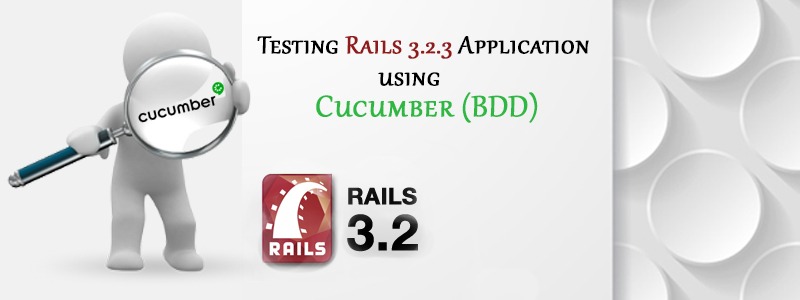What is Cucumber?
Cucumber is used for Behavior Driven Development. Cucumber lets software development teams describe how software should behave in plain text. The text is written in a business-readable domain-specific language and serves as documentation, automated tests and development-aid – all rolled into one format.
Cucumber works with Ruby on Rails, Java, .NET, Flex or web applications written in any language. It has been translated to over 40 spoken languages. Cucumber also supports more succinct tests in tables – similar to what FIT does.
Install cucumber for Rails 3:
Install Cucumber, Rspec-rails and capybara gem
sudo gem install cucumber-rails sudo gem install database_cleaner sudo gem install rspec-rails sudo gem install capybara
-
Cucumber is a behavior driven development (BDD) framework in particular good for integration and functional tests
- RSpec is a behavior driven development (BDD) framework for low-level testing in the Ruby language
- database_cleaner performs DB cleanup in testing
- capybara simulating a browser, automating a browser or setting expectations using the matchers.
Using Cucumber to test rails 3 application:
1. Create a new Rails application store
$rails new store -d mysql
2. Edit the Gemfile
Include the Cucumber gems in a Rails 3 application
group :test, :development do
gem 'rspec-rails'
gem 'cucumber-rails'
gem 'capybara'
gem 'database_cleaner'
end
3. bundle install
4. Install the cucumber skeleton files to a Rails 3 application.
$ rails generate cucumber:install
The cucumber-rails generator creates the directories:
features/step_definitions
features/support
The cucumber-rails generator creates the files:
config/cucumber.yml
features/support/env.rb
lib/tasks/cucumber.rake
script/cucumber
5. rake db:create 6. rake db:migrate
7. Run the Cucumber features
$rake cucumber
Create cucumber features:
- Create a Cucumber Feature for RoR 3 application testing
$vi features/manage_store.feature
- Cucumber Feature is the business user testing specification written in plain English with a specific format
Feature Format
Feature: ...
In order ...
Some Actor ...
Should ...
Scenarior: ...
Given ...
And ...
When ...
AND ...
Then ...
AND ...
Implement the testing steps and Ruby on Rails model code for Cucumber on Rails :
- Create Cucumber step definitions
$vi features/step_definitions/order_steps.rb
- Cucumber uses regular expression to match string and pass it to the step definitions
- Run Cucumber
$rake cucumber
An example might be the ability to manage companies:
Feature: Manage companies In order to keep track of companies user should be able to manage companies Scenario: Create a new company Given I am logged in When I create a new company named Acme Then I should see that a company named Acme exists features/ companies.feature steps/ company_steps.rb Given == Setup Given "I am logged in" do user = Factory(:user) visits new_session_path fills_in ‘Login’, :with => user.login fills_in ‘Password’, :with => user.password clicks_button ‘Login’ end Given "I am logged in" do user = Factory(:user) visits new_session_path fills_in 'Login', :with => user.login fills_in 'Password', :with => user.password clicks_button 'Login' end When == Change When "I create a new company named $name" do |name| visits new_company_path fills_in 'Name', :with => name clicks_button 'Create' end Then == Outcome Then "I should see that a company named $name exists" do |name| response.body.should =~ Regexp.new(name) end At every step you need to run cucumber and check for the result.




